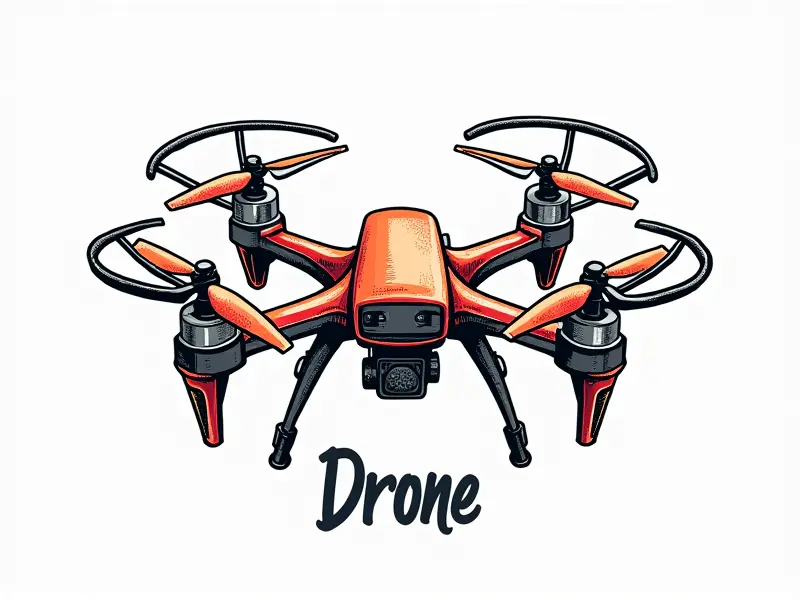Cleaning drone sensors

How to Clean Drone Sensors Quickly
Drone sensors are critical components that ensure the accuracy and reliability of your aerial footage. Over time, these sensors can accumulate dust, dirt, and other debris, which can degrade image quality and affect flight performance. Cleaning drone sensors is a straightforward process if you follow the right steps.
Essential Tools for Sensor Cleaning
- Canned Air: Use canned air to blow away loose particles without damaging delicate components.
- Lens Cleaning Cloths: Soft, lint-free cloths are ideal for wiping down surfaces gently.
- Sensor Brush: A specialized brush designed specifically for cleaning sensor elements.
Easy Tips for Cleaning Drone Lenses
Lens cleaning is a crucial part of maintaining your drone's optical performance. Here are some tips to keep your lenses clear and free from contaminants:
Preventative Measures
- Cover Your Lens: Use lens caps or covers when not in use.
- Avoid Touching the Glass: Minimize direct contact with your fingers to prevent oil and dirt buildup.
Maximize Flight Performance: Clean Those Sensors!
Clean sensors are essential for optimal flight performance. Dust and debris can interfere with the drone's ability to capture high-quality images and videos, leading to blurry footage and inaccurate navigation data.
Steps to Maximize Sensor Efficiency
- Inspect Regularly: Check your sensors after each use for signs of dirt or dust accumulation.
- Clean Before Storage: Ensure all components are clean before putting the drone away.
Essential Sensor Cleaning for Drones Explained
Sensor cleaning is a vital maintenance task that should not be overlooked. Understanding how to properly clean your drone's sensors can extend their lifespan and maintain peak performance.
The Importance of Clean Sensors
- Improved Image Quality: Clearer images with better resolution and color accuracy.
- Better Navigation Data: Accurate GPS readings for smoother flight control.
Simple Steps to Clean Drone Optical Sensors
Cleaning optical sensors is a delicate process that requires precision and care. Follow these simple steps to ensure your drone's sensors remain in top condition:
The Cleaning Process
- Power Off the Drone: Ensure all power sources are disconnected before cleaning.
- Blow Away Loose Particles: Use canned air to remove dust and debris from surfaces.
- Gently Wipe Surfaces: Use a soft, lint-free cloth to wipe down the sensor area.
Maintain Your Drone's Vision with Sensor Care
A clean drone is a happy drone. Regularly maintaining your sensors ensures that your aerial equipment continues to deliver high-quality results and reliable performance.
Regular Maintenance Schedule
- Daily Inspections: Quick checks after each flight can catch issues early.
- Weekly Deep Cleans: Thorough cleaning once a week to keep sensors pristine.
Extend Drone Lifespan: Clean Those Sensors!
A well-maintained drone is more likely to last longer and perform better over time. Regular sensor cleaning can prevent wear and tear, ensuring your investment remains valuable for years to come.
The Benefits of Consistent Cleaning
- Longer Equipment Life: Reduced risk of damage from dirt and debris buildup.
- Better Performance: Enhanced image quality and navigation accuracy.
Why Regularly Cleaning Drone Sensors Matters
The importance of regular sensor cleaning cannot be overstated. Neglecting this task can lead to a decline in performance, increased maintenance costs, and potential damage to your drone's components.
The Consequences of Dirty Sensors
- Reduced Image Quality: Blurry or distorted footage due to dust accumulation.
- Poor Navigation Data: Inaccurate GPS readings affecting flight stability and control.
Quick Guide to Cleaning FPV Camera Lenses
First-person view (FPV) cameras are essential for real-time video transmission during drone flights. Keeping these lenses clean is crucial for maintaining clear, uninterrupted views.
Steps for FPV Lens Maintenance
- Turn Off Power: Disconnect all power sources before cleaning.
- Blow Away Dust: Use canned air to remove loose particles from the lens surface.
- Clean Gently: Wipe down with a soft, lint-free cloth for a thorough clean.
Fast Fixes for Dirty Drone Optics
When your drone's optics become dirty or dusty, quick fixes can help restore clarity and functionality. Here are some fast solutions to get you back in the air:
Rapid Cleaning Techniques
- Canned Air Sprays: Quick and effective for removing loose particles.
- Lens Cleaning Wipes: Convenient, single-use wipes for on-the-go cleaning.
Essential Steps for Drone Sensor Hygiene
Maintaining sensor hygiene is key to preserving the longevity and performance of your drone. Follow these essential steps to keep your sensors clean and functional:
The Hygiene Checklist
- Daily Inspections: Quick checks for any signs of dirt or damage.
- Weekly Deep Cleans: Thorough cleaning sessions to remove accumulated debris.
- Battery Maintenance: Ensure batteries are clean and free from corrosion.
Conclusion
Cleaning drone sensors is a simple yet crucial task that can significantly impact the performance and lifespan of your aerial equipment. By following these guidelines, you can ensure your drone remains in top condition, delivering high-quality images and reliable navigation data for all your flights.

